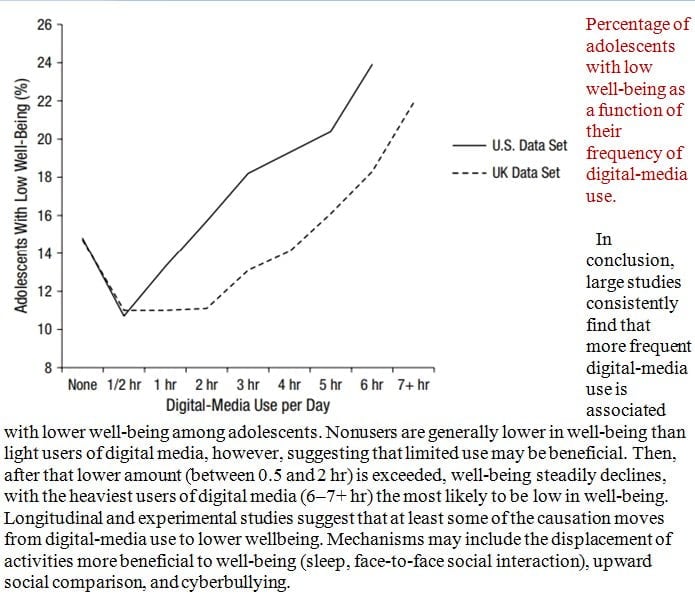https://doi.org/10.1177/0963721419838244
Abstract
Studies using large samples consistently find that more frequent users of digital media are lower in psychological well-being than less frequent users; even data sets used as evidence for weak effects show that twice as many heavy users (vs. light users) are low in well-being. Differences in perspective may stem from the statistics used; I argue that comparing well-being across levels of digital-media use is more useful than the percentage of variance explained, as most studies on digital-media use do not measure other influences on well-being (e.g., genetics, trauma), and these other influences, unlike frequency of digital-media use, are rarely controllable. Nonusers are generally lower in well-being than light users of digital media, however, suggesting that limited use may be beneficial. Longitudinal and experimental studies suggest that at least some of the causation moves from digital-media use to lower well-being. Mechanisms may include the displacement of activities more beneficial to well-being (sleep, face-to-face social interaction), upward social comparison, and cyberbullying.
GRAPH
